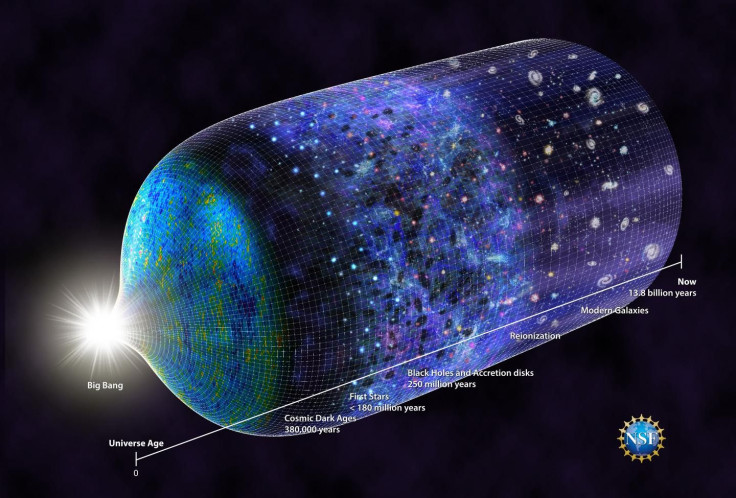NASA Discovers First Molecule Formed By Big Bang In Space

Since the Big Bang Theory was proposed, scientists have been focusing on investigating the chemical reactions responsible for the creation of the universe. Now, the first evidence proving the presence of the first molecule HeH+, helium hydride, has been found.
JUST FOUND: The 1st type of molecule ever formed in the universe. ⚛️
— NASA (@NASA) April 17, 2019
Scientists using our @SOFIAtelescope have located helium hydride in our own galaxy. It is a contributor to the formation of the 1st stars. Unveil our cosmic beginnings: https://t.co/cpaSeV8F8s pic.twitter.com/MNnV4VOZwH
During the dawn of Big Bang, when the temperature of the young universe had cooled down, the first molecular bond of HeH+ was created through the association of the H+ (hydrogen ion or proton) and helium atoms due to radiation, scientists proposed. This molecule will later break into a neutral atom of hydrogen and helium, the most abundant elements in the universe.
The first HeH+ was synthesized in a laboratory in 1925, and the possibility that it might exist was initially proposed in the late 1970s. Since then, researchers have never found any concrete evidence of its existence – until now. In research findings published in the journal Nature, scientists detected HeH+ in a cosmic cloud in a planetary nebula.
Since the 1970s, astronomers have been searching for the first type of molecule that ever formed after the Big Bang. Now it’s finally been found. https://t.co/grKSNCXLFF pic.twitter.com/AGWsWJJsk8
— SOFIAtelescope (@SOFIAtelescope) April 17, 2019
“Here we report observations, based on advances in terahertz spectroscopy and a high-altitude observatory, of the rotational ground-state transition of HeH+ at a wavelength of 149.1 micrometres in the planetary nebula NGC 7027,” the researchers wrote in the study.
We detected it in a planetary nebula, a remnant of what was once a Sun-like star, called NGC 7027. Space telescopes did not have the technology needed to pick out helium hydride's signal from the medley of other molecules, but a recent upgraded added it to our flying telescope.
— SOFIAtelescope (@SOFIAtelescope) April 17, 2019
The team was able to detect the HeH+ in the cosmic cloud of gas of a dying star around 3,000 light-years from our planet. They made the discovery with the help of NASA telescope SOFIA, or Stratospheric Observatory for Infrared Astronomy, and high-resolution spectrometer GREAT, or German Receiver for Astronomy at Terahertz Frequencies.
“This confirmation of the existence of HeH+ in nearby interstellar space constrains our understanding of the chemical networks that control the formation of this molecular ion, in particular the rates of radiative association and dissociative recombination,” researchers stated.
"The discovery of HeH+ is a dramatic and beautiful demonstration of nature's tendency to form molecules," study co-author David Neufeld, a professor at Johns Hopkins University in Baltimore, said in a statement. "Despite the unpromising ingredients that are available, a mixture of hydrogen with the unreactive noble gas helium, and a harsh environment at thousands of degrees Celsius, a fragile molecule forms."
The results of the study set the parameters for the overall direction of future studies about Big Bang.
© Copyright IBTimes 2024. All rights reserved.





















